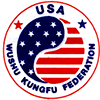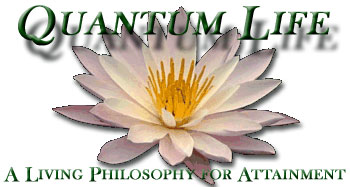of USAWKF
- Volume One
- Volume Two
- Volume Three
- What is Daimoku
- On Becoming
- The Buddha's Work
- A Debt of Gratitude
- Longing for Masters
- Samsara and the Ego
- Samsaric Opportunity
- Singlemindedly desire to see the Buddha
- The Two Great Concepts
- Pain of ending friendships
- The Buddha's Teaching
- Broad Study but Focused Practice
- Merits of Teaching the Law
The Two Great Concepts of the Lotus Sutra
great sketch! :-) it made me laugh.
The truth I was trying to bring out in the sentence you excerpted was
the essence of the development of Buddhism and the adherence to early
provisional teachings meant to train the ignorant and easily dissuaded
"believers" into higher conscious states so that they could
one day receive the true and expedient teachings as well as the ultimate
reality and truth of the nature of life. In the early teachings and for
some forty years, all the "suttas" oral and transcribed were
about two things. 1- release from earthly "attachments" to develop
a "free" mind, the mind of "liberation" and "awakening"
to the nature of the mind. This is accomplished through Vipassanna (knowledge)
and samatha (experience or consciousness). 2- that the Buddha, attained
enlightenment in India at the age thirty.
It was not until the final 8 years of his life that the Buddha taught
the "true" teaching which threw many sects and sub-sects, already
dedicated to the provisional (early) teachings into a frenzied tizzy.
Some even created their own saints and labelled Siddhartha a charlatan
and liar. Obviously, the Buddha was right not to have taught this to start.
When he "first attained enlightenment in India", he wrote and
taught the Kegon sutta. If you have the will to read the Kegon (Thomas
Cleary's translation contains an amazing introduction although he is stuck
at the Zen level himself, you will find that almost every page is filled
with the revelations of the purification, the "otherness" the
complete and utter disconnection from the mind and its attendant "imaginings,
real or not real, etc. But nobody got it. In fact, even the Kegon sect
did not get it until a thousand years later, when Tien-Tai of China elucidated
the concept of ichinen sanzen contained in the Lotus Sutra. Suddenly the
Kegon sect revised their scripture to include the ichinen sanzen by quoting
sentences and fragments of the Kegon sutta to claim they knew it all along.
The idea of ichinen sanzen (three thousand states in each moment) is that
all life is a continuum of a subtle consciousness not of the mind. This
continuum has strands within it of accumulated causes and latent effects.
Like an eternally roiling karmic waterfall on the edge of a black hole,
this consciousness sometimes, when the conditions prevail, meet with the
five components of life, form, perception, conception, volition, and consciousness
(samsaric consciousness) initiating the Nidana, or descent into "name
and form" "reality". This is beyond all provisional teachings
and not explicitly taught until the Lotus Sutra. In the first half of
the Lotus Sutra, Buddha proclaims that until this time he has not yet
revealed the true teaching and that it is now time to reveal this true
teaching of the One Vehicle. This is where the teachings of "mind"
fall short at the "gateway" to enlightenment (Buddhahood), but
never enter. Over the centuries, many sects have tried to incorporate
this teaching in myriad ways but still maintain their defiance of the
supremacy of the Lotus Sutra. Of course this teaching of the Lotus Sutra
is fundamental to the path of enlightenment taught by the Buddha, making
all other teachings antithetical. This destroys the first precept above
that the ascesis of the "void" is the ultimate goal. Also the
ichinen sanzen and the Lotus Sutra make it abundantly clear that this
is the fundamental nature of ALL life sentient AND insentient, and therefore
that ALL phenomena, good, bad, ugly, inherently posses the Buddha nature
(e.g. are extant from this "pool of consciousness"), the practice
of ascesis is no longer elite, noble, or restricted in any manner from
any being, including women, is simply based on Bodhisattva practices and
realizations of love and kindness, (containing the three fundamentals
of Lotus Sutra practice which are, study of all texts Buddhist and non-Buddhist,
the active meditation of chanting- meditation combined with action in
phenomenal life-, and the contemplation of true nature of "life",
not restricted to mind only).
The biggest whammy came in the essential teachings of the Lotus Sutra
(the second 14 chapters), when the Buddha now revealed firstly that he
had trained all the bodhisattvas of the earth. Since all of these bodhisattvas
were unknown at the time, the natural question was, "How could you
teach all these Bodhisattvas who are much older and unknown to us since
you attained enlightenment only forty or so years ago in India?"
The answer, the Buddha attained enlightenment in a remote incalculably
distant past. This is in reference to ichinen sanzen, and the process
of karmic cleansing and purification over many "lifetimes" or
instantiations of the karmic "strand" from the fundamental consciousness
or life force. It seems odd in retrospect that this revelation should
be such a problem, given the Hindu propensity for "re-incarnation".
Thought this is different in that re-incarnation presupposes and intrinsic
"identity" which remains intact from life to life having its
"memory" generally wiped clean in the process of death and rebirth.
This is not the Buddhist view at all. If you carefully trace the Nidana
and the concept of ichinen sanzen, what results is a repository of all
life force with "areas" of tendencies and predilections like
static in a radio transmition, created by "imprints" upon it.
When conditions avail, like in the case of the radio signal where it "finds"
or contacts a "receiver", the transmission is made, into a new
form. At death, the form simply disappears as the radio wave re-assimilates
with the whole. This is where Tibetan Buddhism is flawed as it continues
to adhere to Theravada and Provisional teachings.
I hope that this has been helpful. Please do not hesitate to ask any further
questions, as they are a great benefit for me as well. :-)
Love and respect
Reverend Sylvain Chamberland, Nyudo
BACKGROUND
----- Original Message -----
From: Lynn Kubasek
Sent: Sunday, May 07, 2006 7:45 PM
Subject: Re: Another sign of the end of western civilization...
LOL!
Great image...you knew I'd hop on that one!?
I really appreciate your letters. This whole weekend experience was just
awful, but it offered great opportunity for discussion of what motivates
the school district.
I usually have to have an extra browser up with Google to check the definitions
of terms but, then...it's usually something I think I knew before. (my
day job is eating my brain). Shomon and Engaku ... oh yes ... I know those!
We saw "Thank You for Smoking" today...it was pretty marginal,
but the creepy, smarmy character ended up being an unlikely kind of hero
for ultimately urging people to think for themselves, whether it be smoking
or anything else.
Hmmm...I am chewing on this fragment...
"...that the strength of samsaric reality holds through even the
most ardent Theravada, Vipassanna, Samatha, Zen, Sanron, Shingon, or any
of the schools of Hinniyana or provisional Mahayana ascesis." Only
because I did one of those 10-day Vipassanna meditation sessions...it
was great to have the timeout to focus. I feel like I am not connecting
the dots that you are patiently tracing out though.












